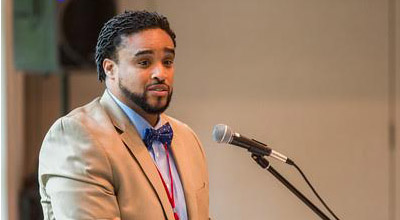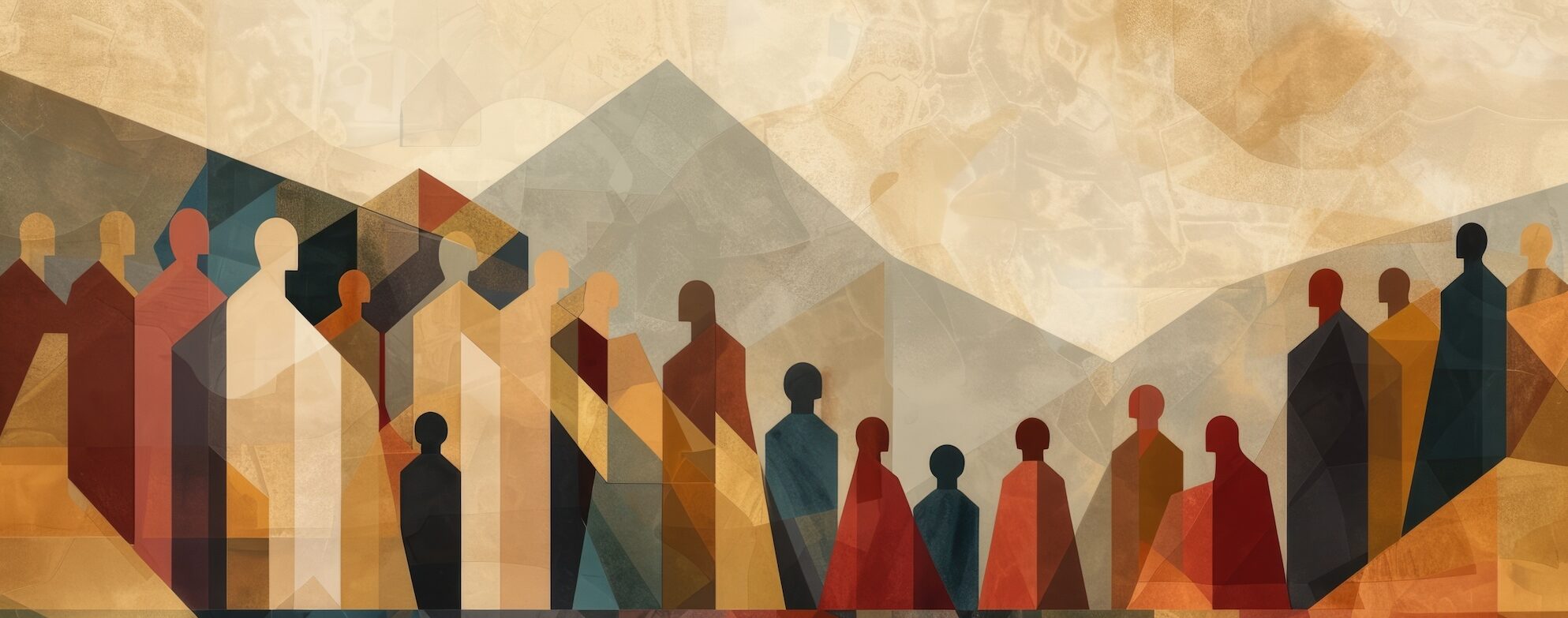
Tali Hairston lives in Seattle and serves as the director of the Perkins Center for Reconciliation at Seattle Pacific University. Our editor-in-chief Dr. Matthew Kaemingk sat down with him to discuss the issue of race, justice, and Christianity in Seattle.
Kaemingk: Thank you very much for joining us for this conversation, Tali. To start us off, how would you describe the African American experience in a “progressive” city like Seattle? And, furthermore, how might it compare to life in cities like Atlanta, St. Louis, or Chicago?
Hairston: Thank you very much for having me. While I would love to believe that my city of Seattle is as “progressive” as it claims to be, the data says something very different.
The data says that while Seattle believes itself to be a progressive and post-racial paradise, the city experiences the same rates of racial segregation and disparity in terms of income, education, crime, incarceration, housing, and health as the rest of the country.
So, if you ask me to compare the African American experience in Seattle to that of a city like Atlanta, I would say that they are pretty much the same.
I should say, however, there is one important difference—and it’s not a good one.
Most everyone in cities like Atlanta, St. Louis, or Chicago are at least aware of the racial tensions and disparities that afflict their cities. Here in Seattle, we aren’t.
Simply by labeling ourselves “progressive,” we believe we have solved the issues of racial disparity and enmity.
Kaemingk: What is your read on the Seattle church and its role in this problem?
Hairston: Sadly, Seattle’s church largely mirrors Seattle’s culture. They all suffer from the “Seattle nice” or, better yet, the “Seattle ice.” Seattleites are kind and polite to minorities but I know that there are deeper issues going on beneath the surface. The “Seattle nice” makes real dialogue of racial issues difficult not only in our city but in our churches as well.
The hard truth is this. Seattle churches are just as segregated as the city itself. They are just as “nice” in their polite disregard for the deep racial disparity brewing in their city.
White churches in Seattle are perfectly comfortable talking about issues of poverty and injustice in far away places like Israel, Palestine, Africa, and Latin America, but they don’t want to talk about the injustice happening on the south side of town. They want their causes to be further out. It’s embarrassing for our progressive city to admit that we have a justice issue right here at home.
Kaemingk: Can you talk a little bit more about why it is difficult to talk about race and reconciliation here in Seattle?
Hairston: Well, there are four main challenges preventing real dialogue on this issue.
We already jumped into the first and most daunting challenge—awareness that a problem actually exists.
Once that awareness is raised, however, a second challenge quickly comes up— we call it “white guilt.” You see, when they are confronted with the humbling realization that they are a part of the problem, white progressives begin to suffer from a guilt that can become debilitating. We can’t let them become paralyzed by this guilt. They need to be mobilized to be active participants in reconciliation.
Once they are convinced they need to take action we immediately hit the third challenge. They think “action” means getting out there and “helping” minorities. They don’t realize that the first work of reconciliation is actually internal.
Reconciliation begins with taking a hard look at ourselves first. We must first gain insight into our own flaws and needs before we can begin to develop eyesight for how we can interact with others.
The fourth and final challenge for racial reconciliation in Seattle is that we are a culture of technological “fixers.” We are a high-tech culture trained in systematic problem-solving. Seattleites are great at coding computers, following steps, and coming up with solutions. This is wonderful for building a software company and terrible for working on racial reconciliation.
Almost every time I work with Seattle churches on the issues of race and ethnicity I am asked to provide a three-step plan for how to “fix” the race issue… but reconciliation doesn’t work like computer code. It’s a long and complex journey involving ups and downs, mysteries and setbacks, meals and friendships, misunderstandings and new discoveries, and, to tell the truth, reconciliation never really ends.
Kaemingk: Theses days Seattle seems to be bursting at the seams. The issues of gentrification and housing affordability are significant topics of debate. One particularly heated debate has been that of re-zoning single home neighborhoods for the construction of dense forms of condos and apartments. Race has made its way into this debate as people contend that higher density leads to more economic and ethnic diversity. What is your reaction to this debate?
Hairston: Access to affordable, safe, and adequate housing is critical to the health and well-being of minority communities in Seattle. It’s that simple.
Sadly, the church in Seattle has largely failed to speak out on the issue of housing justice. In fact, I consider their silence on this issue to be the clearest evidence we have that the church in Seattle has, by and large, given itself over to an American obsession with residential wealth, safety, security, and comfort.
The Seattle church (and Seattle more broadly) wants to protect their single-family neighborhoods not simply from high-rise apartment buildings but from the black and brown bodies that would move into those buildings. They fear that welcoming the new neighbors would risk their neighborhoods’ safety and property values.
On Sunday morning the Seattle church claims to worship a God of sacrificial love, risk, and selflessness and on Monday morning they support a housing system that is dedicated to maintaining their own security and comfort at the expense of others.
It is a spirituality driven by fear and selfishness—not love.
Kaemingk: You say that Seattle is a segregated city with deep racial disparity. Can you explain historically how this came to be?
Hairston: Racial segregation and disparity is not new in Seattle. It is a long story—a story that breaks God’s heart.
From its very beginning Seattle organized itself and its people to serve the demands of industry. First it was timber, then coal, then the gold rush, Boeing, and finally today it is Microsoft and Amazon.
In Seattle industry is king. Peoples, cultures, races, even whole rivers, lakes, and hills have been moved and sometimes destroyed for the grand purposes of industry.
The story begins, of course, with the Native American communities being driven off of the land for timber, settlement, and trade. Treatises were broken. Villages were burned. The story of the Asian American community begins with Chinese laborers being placed in segregated labor camps for the building of railroads. I actually grew up in a Seattle neighborhood called “Chink Hill” where the Chinese immigrants lived. Later on African American communities were also segregated into specific neighborhoods to work in Seattle’s factories and shipyards.
The segregation we see in Seattle today is no accident. At one point there were at least 44 different real estates covenants that ensured a racially segregated city. We now know that redlining existed in Seattle. We now know that for years minority families could not receive home loans to live in certain neighborhoods.
Looking at our history it is no surprise that certain neighborhoods are more violent than others. When communities experience generations of systemic abuse, dehumanization, and oppression, it is no surprise that they begin to mirror and reflect that culture of abuse and violence. As any psychologist will tell you, abused people abuse, and violated people violate.
Today’s gentrification, with its roots in the tech industry, is only the latest chapter in a long and sad story.
Kaemingk: While this is certainly a sobering look at the city of Seattle you seem (surprisingly) to be a person of deep hope. What are some examples of people and organizations here in Seattle that give you hope?
Hairston: Lots of people and communities give me hope.
To name a few I would point to SPU students involved in the Perkins Center for Reconciliation, I would point to Urban Impact, to the work of Maria-José Soerens and her organization Puentes. In terms of churches I would point to Rainier Avenue Church, Quest Church, Lake Burien Presbyterian Church, Radiant Church (just to name a few). Finally, the powerful writing of our own Nikita Oliver gives me hope.
Kaemingk: Finally, when you think about these people and communities that give you hope, what would you say is the common thread that links their work in the city?
Hairston: That’s easy. It’s the incarnation.
I would have to say these people are passionate about living deeply into the incarnation of Jesus Christ. They are committed to not simply talking about the gospel but actually embodying the good news of reconciliation in Christ in real and tangible ways.
These people and these churches are embodying the vision of Jeremiah 29 by embedding themselves and their lives in their neighborhoods. As Jeremiah commands, they are planting gardens, building homes, marrying, raising kids, and living deeply into communities of brokenness and beauty. These are people of incarnation.
They don’t simply preach the word of Jesus. Instead, with black, brown, and white bodies, they go out into their communities and actually embody it.
They are people who expect to find their peace in the peace of the city.

